
Cape Fear Coast: North Carolina's Coastal Gem
Discover Cape Fear Coast in North Carolina: Pristine beaches, historic sites, and vibrant coastal towns await, offering a perfect blend of relaxation and adventure.
Welcome to Cape Fear Coast, a stunning stretch of shoreline in North Carolina that offers a blend of natural beauty, rich history, and vibrant culture. Known for its pristine beaches, historic sites, and charming coastal towns, Cape Fear Coast is a perfect getaway for tourists seeking both relaxation and adventure. Start your journey in Wilmington, a historic port city with a lively downtown area. Here, you can stroll along the Riverwalk, explore the USS North Carolina Battleship, and visit the historic district with its beautifully preserved antebellum homes. Don't miss the chance to dine at one of the many waterfront restaurants, offering fresh seafood and stunning views of the Cape Fear River. Just a short drive away, you will find the picturesque beaches of Wrightsville Beach, Carolina Beach, and Kure Beach. Each offers its own unique charm and a range of activities from surfing and paddleboarding to fishing and beachcombing. For nature enthusiasts, the Fort Fisher State Recreation Area and the North Carolina Aquarium at Fort Fisher provide opportunities to explore the region's diverse wildlife and marine life. History buffs will appreciate a visit to the Fort Fisher Historic Site, where pivotal Civil War battles took place. Meanwhile, the town of Southport, with its quaint streets and historic homes, offers a glimpse into the region's maritime past. Cape Fear Coast is also home to several annual festivals and events, including the North Carolina Azalea Festival and the Wilmington Wine & Food Festival, which showcase the area's culture and hospitality.
Local tips in Cape Fear Coast
- Visit during the shoulder seasons (spring and fall) for fewer crowds and pleasant weather.
- Pack sunscreen and insect repellent, especially if you plan to visit the beaches and nature areas.
- Explore the local seafood cuisine; try dishes like shrimp and grits or fresh catch of the day.
- Consider renting a bike to explore Wilmington's Riverwalk and nearby scenic trails.
- Check the local event calendar for festivals and live music, which are frequent in the summer months.
Cape Fear Coast: North Carolina's Coastal Gem
Welcome to Cape Fear Coast, a stunning stretch of shoreline in North Carolina that offers a blend of natural beauty, rich history, and vibrant culture. Known for its pristine beaches, historic sites, and charming coastal towns, Cape Fear Coast is a perfect getaway for tourists seeking both relaxation and adventure. Start your journey in Wilmington, a historic port city with a lively downtown area. Here, you can stroll along the Riverwalk, explore the USS North Carolina Battleship, and visit the historic district with its beautifully preserved antebellum homes. Don't miss the chance to dine at one of the many waterfront restaurants, offering fresh seafood and stunning views of the Cape Fear River. Just a short drive away, you will find the picturesque beaches of Wrightsville Beach, Carolina Beach, and Kure Beach. Each offers its own unique charm and a range of activities from surfing and paddleboarding to fishing and beachcombing. For nature enthusiasts, the Fort Fisher State Recreation Area and the North Carolina Aquarium at Fort Fisher provide opportunities to explore the region's diverse wildlife and marine life. History buffs will appreciate a visit to the Fort Fisher Historic Site, where pivotal Civil War battles took place. Meanwhile, the town of Southport, with its quaint streets and historic homes, offers a glimpse into the region's maritime past. Cape Fear Coast is also home to several annual festivals and events, including the North Carolina Azalea Festival and the Wilmington Wine & Food Festival, which showcase the area's culture and hospitality.
When is the best time to go to Cape Fear Coast?
Iconic landmarks you can’t miss
North Carolina Aquarium at Fort Fisher
Explore the North Carolina Aquarium at Fort Fisher: An awe-inspiring journey through the ocean's wonders with engaging exhibits and stunning marine life.

Battleship North Carolina
Discover the storied past of the Battleship North Carolina, a World War II naval hero and a unique historical museum in Wilmington.

Fort Macon State Park
Discover the beauty and history of Fort Macon State Park, a coastal gem in North Carolina featuring beaches, trails, and a historic fort.

Carolina Beach Boardwalk
Discover the vibrant Carolina Beach Boardwalk, where ocean views, amusement rides, and local cuisine await you in a fun-filled coastal atmosphere.

Cape Hatteras Lighthouse
Explore the iconic Cape Hatteras Lighthouse, the tallest brick lighthouse in the U.S., and enjoy stunning views and rich maritime history on the Outer Banks.
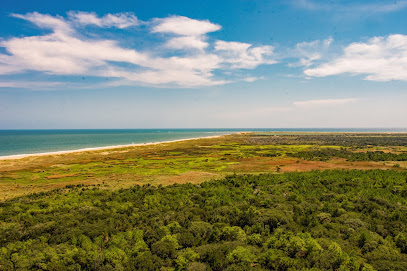
Carolina Beach State Park
Experience the natural beauty of Carolina Beach State Park, where pristine beaches meet lush forests for an unforgettable adventure in North Carolina.

Fort Fisher State Historic Site
Discover Fort Fisher State Historic Site, a historical gem where Civil War history meets stunning coastal scenery in Kure Beach, NC.

Airlie Gardens
Explore the enchanting Airlie Gardens in Wilmington, NC, where stunning landscapes, diverse flora, and rich history come together in a serene botanical experience.

Wilmington Riverwalk
Experience the charm and beauty of Wilmington, NC, at the Riverwalk, where history meets scenic waterfront views and vibrant local culture.

Oak Island Lighthouse
Experience the stunning views and rich history at Oak Island Lighthouse, a must-visit landmark on the North Carolina coast.

Fort Fisher State Recreation Area
Experience the scenic beauty and rich history of Fort Fisher State Recreation Area, a coastal paradise for nature lovers and history buffs alike.

Bellamy Mansion Museum
Discover the rich history and stunning architecture of the Bellamy Mansion Museum in Wilmington, NC, a captivating local history museum and event venue.

Wilmington Railroad Museum
Explore Wilmington's rich rail history at the Wilmington Railroad Museum, featuring interactive exhibits and historical artifacts for all ages.
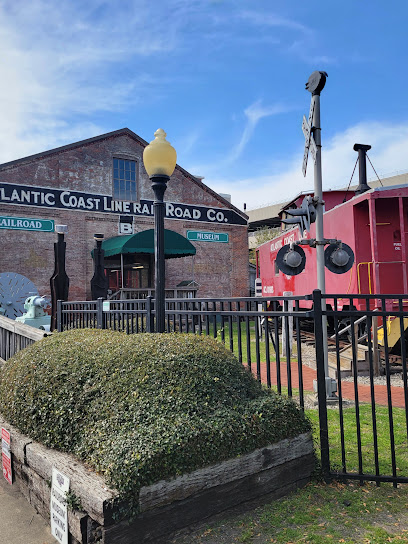
Old Baldy Lighthouse and Smith Island Museum
Visit Old Baldy Lighthouse and Smith Island Museum, a historic gem on Bald Head Island that showcases North Carolina's maritime heritage and breathtaking ocean views.

Poplar Grove Plantation
Explore the rich history and scenic beauty of Poplar Grove Plantation, a charming historical site nestled in Wilmington, NC.

Unmissable attractions to see
North Carolina Aquarium at Fort Fisher
Immerse yourself in the marine wonders of the North Carolina Aquarium at Fort Fisher, where education meets adventure in a stunning coastal setting.

Battleship North Carolina
Discover the Battleship North Carolina, a historic naval museum showcasing the legacy of WWII with immersive exhibits and breathtaking river views.
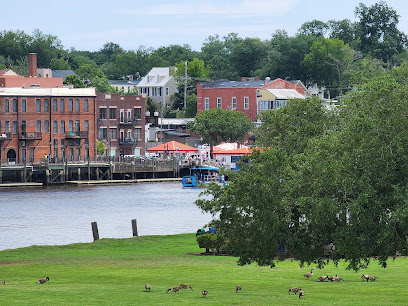
Carolina Beach Boardwalk
Explore the Carolina Beach Boardwalk: a vibrant hub of fun with rides, shops, and ocean views, perfect for families and beach lovers.

Fort Fisher State Historic Site
Explore Fort Fisher State Historic Site: A fascinating blend of Civil War history and stunning coastal landscapes in North Carolina.

Airlie Gardens
Discover the serene beauty of Airlie Gardens, a stunning botanical garden in Wilmington, NC, perfect for nature lovers and tourists seeking tranquility.

Jungle Rapids Family Fun Park
Experience the ultimate family adventure at Jungle Rapids Family Fun Park, Wilmington's top destination for thrilling water rides and amusement attractions.

Wilmington Riverwalk
Explore the picturesque Wilmington Riverwalk for stunning river views, historic charm, and vibrant local culture in Wilmington, North Carolina.

Oak Island Lighthouse
Experience the historic Oak Island Lighthouse, a stunning coastal attraction offering breathtaking views and a glimpse into maritime heritage.

Wilson Center at Cape Fear Community College
Discover the vibrant performing arts scene at the Wilson Center in Wilmington, NC, where unforgettable performances await in a stunning venue.

Museum of the Bizarre
Explore the eccentric and extraordinary at the Museum of the Bizarre in Wilmington, NC, a quirky attraction filled with oddities and unique exhibits.

Bellamy Mansion Museum
Discover the rich history and stunning architecture of Wilmington's Bellamy Mansion Museum, a must-visit local history museum and tourist attraction.

Wilmington Railroad Museum
Discover the Wilmington Railroad Museum: A captivating journey through the history of railroads and their impact on the American landscape.

Poplar Grove Plantation
Explore the history and beauty of Poplar Grove Plantation, a serene and captivating site in Wilmington, North Carolina, steeped in Southern heritage.

Cameron Art Museum
Discover Wilmington's artistic heritage at Cameron Art Museum, showcasing diverse collections and vibrant exhibitions that captivate every visitor.

Blue Post Billiards
Experience the vibrant nightlife at Blue Post Billiards in Wilmington, NC — a lively pool hall and bar perfect for socializing and entertainment.
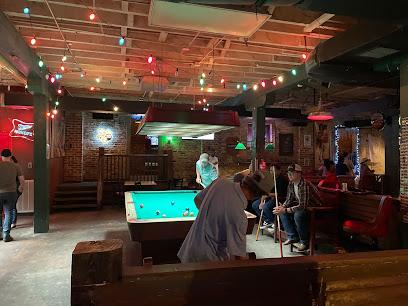
Essential places to dine
The Copper Penny
Discover Wilmington's culinary gem at The Copper Penny - where American flavors meet Southern charm in a vibrant riverside setting.

The Fork 'N' Cork
Experience the heart of Wilmington at The Fork 'N' Cork - where delicious American cuisine meets vibrant social dining.

Elijah's
Experience exquisite seafood dining at Elijah's on Wilmington's beautiful Riverfront – where every meal comes with stunning views.

Pilot House Restaurant
Experience exquisite seafood dining at Pilot House Restaurant with stunning river views in Wilmington, NC.

Fish Bites Seafood Restaurant
Experience the best of Wilmington's coastal cuisine at Fish Bites Seafood Restaurant - where freshness meets flavor!

Marina Grill
Experience the best of American cuisine and fresh seafood at Marina Grill, where stunning riverfront views enhance your dining adventure.

Anne Bonny's Bar and Grill
Experience coastal flavors at Anne Bonny's Bar and Grill in Wilmington's Historic District with stunning views of Cape Fear River.

Cape Fear Seafood Company
Experience fresh seafood like never before at Cape Fear Seafood Company in Wilmington – where local flavors meet coastal charm.
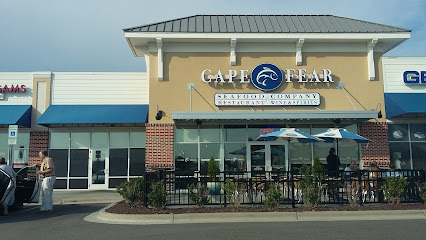
The George on the Riverwalk
Experience exquisite seafood dining with stunning river views at The George on the Riverwalk in Wilmington, NC.

Smoke on the Water
Discover exquisite American and seafood cuisine at Smoke on the Water in Wilmington, offering stunning views of Cape Fear for an unforgettable dining experience.

The Bridge Tender
Experience exquisite seafood dining at The Bridge Tender in Wilmington, NC – where fresh ingredients meet Southern hospitality.

Stoked Restaurant
Discover fresh seafood delights at Stoked Restaurant in Carolina Beach - where coastal charm meets culinary excellence.

Little Dipper Fondue
Experience the art of fondue at Little Dipper Fondue in Wilmington - where delicious flavors meet interactive dining.

Reel Cafe
Experience delightful grill cuisine at Reel Cafe in Wilmington's Riverfront district - where flavor meets atmosphere!

Dixie Grill
Experience authentic Southern flavors at Dixie Grill in Wilmington – your go-to spot for breakfast, brunch, and hearty American classics.

Markets, malls and hidden boutiques
The Cotton Exchange
Experience the charm of The Cotton Exchange, a unique shopping mall steeped in history, located in the heart of Wilmington's Riverfront.

Cape Fear Spice Merchants
Explore a world of flavors at Cape Fear Spice Merchants, Wilmington's premier destination for spices, gourmet groceries, and specialty teas.

Blue Moon Gift Shops
Explore Blue Moon Gift Shops in Wilmington, NC for unique gifts, jewelry, home goods, and more that capture the essence of local artistry.

Madame Meerkat's Cabinet of Curiosities
Explore the whimsical world of Madame Meerkat's Cabinet of Curiosities, a must-visit metaphysical supply store in Wilmington, NC, filled with unique treasures.
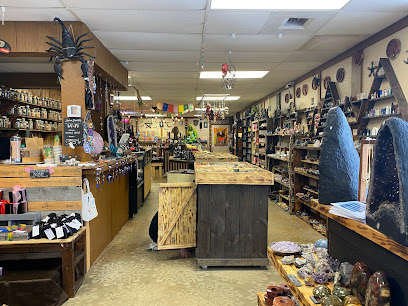
The Black Cat Shoppe
Explore The Black Cat Shoppe in Wilmington, NC, for an unforgettable selection of unique gifts, novelties, and local treasures.

Chandler's Wharf
Experience the vibrant shopping and dining at Chandler's Wharf, nestled on the scenic Wilmington waterfront, perfect for every tourist's itinerary.

Almost Everything Gift Shop
Explore the charm of Wilmington, NC at Almost Everything Gift Shop, your go-to destination for unique gifts and local treasures.

Krazy Mikez
Discover unique T-shirts and local gifts at Krazy Mikez, a vibrant shop in Wilmington, NC, perfect for tourists seeking memorable souvenirs.

Jeanne's Jewels & Fashions Etc.
Explore Jeanne's Jewels & Fashions Etc. for unique jewelry, stylish women's clothing, and local gifts in the heart of Wilmington, NC.

My Sister's Cottage
Explore My Sister's Cottage for unique clothing, stylish accessories, and charming home goods in Wilmington, North Carolina.

dragonflies
Explore Wilmington, NC's Dragonflies Gift Shop for unique souvenirs, local artistry, and a welcoming atmosphere that highlights the region's charm.

Eclipse Artisan Boutique
Explore the artistic charm of Eclipse Artisan Boutique in Wilmington, NC, where local craftsmanship meets unique shopping experiences.

Edge of Urge
Explore Edge of Urge in Wilmington, NC – Your go-to boutique for unique gifts, fashionable accessories, and local artistry.
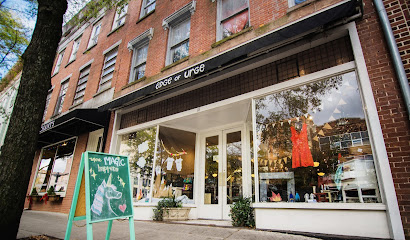
Port City Peddler
Explore the charm of Port City Peddler, Wilmington's premier destination for antiques, vintage finds, and unique gifts that capture the spirit of the South.

Crabby Chic
Discover unique gifts and souvenirs at Crabby Chic, Wilmington's charming gift shop, celebrating local culture and creativity with every find.

Essential bars & hidden hideouts
Anne Bonny's Bar and Grill
Experience Riverside Dining at Anne Bonny's Bar and Grill in Wilmington, NC - Enjoy Southern Flavors with Scenic Views.

Reel Cafe
Experience the best of American grilling at Reel Cafe, a vibrant restaurant along Wilmington's Riverfront, where fresh seafood meets local charm.

Might As Well Bar & Grill
Discover the vibrant flavors of American cuisine at Might As Well Bar & Grill in Wilmington, your perfect spot for burgers, wings, and good times.

Ogden Tap Room
Discover Ogden Tap Room in Wilmington, NC – a delightful grill offering diverse flavors and an extensive selection of craft beers in a lively atmosphere.

Satellite Bar and Lounge
Discover Satellite Bar and Lounge: Wilmington's vibrant bar with a dog-friendly atmosphere, diverse drinks, and a lively ambiance for unforgettable nights.

Duck & Dive Pub
Experience the lively vibe of Duck & Dive Pub, Wilmington's premier destination for live music, great drinks, and delicious pub food.

Cloud 9 Rooftop Bar
Experience breathtaking views and delightful cuisine at Wilmington’s premier rooftop bar, Cloud 9 Rooftop Bar.

The Husk
Experience the lively atmosphere of The Husk, a premier bar in Wilmington offering a wide selection of drinks and a vibrant social scene.

Cape Fear Spirits & Beer
Experience the best of Wilmington's bar scene at Cape Fear Spirits & Beer, where craft beers and cocktails meet riverside charm.

The Blind Elephant
Discover The Blind Elephant, Wilmington's hidden cocktail bar offering a speakeasy vibe and innovative drinks in a charming atmosphere.

Whiskey Tango Foxtrot
Discover the lively cocktail scene at Whiskey Tango Foxtrot, Wilmington’s premier destination for creative drinks and vibrant nightlife.
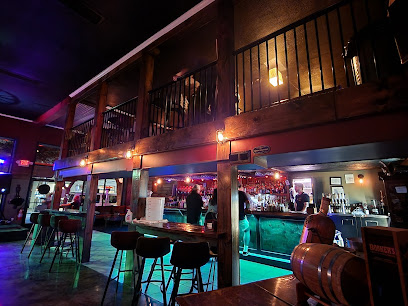
Barbary Coast
Experience the lively atmosphere and diverse drink selection at Barbary Coast, Wilmington's premier bar on the Riverfront.

The Ivey in the Alley
Discover Wilmington's vibrant nightlife at The Ivey in the Alley, a charming bar offering eclectic drinks and a lively atmosphere.

Reggie’s 42nd Street Tavern
Immerse yourself in Wilmington's nightlife at Reggie's 42nd Street Tavern, where live music, friendly vibes, and affordable drinks meet.

Dirty Dan's uncw
Dive into the lively nightlife of Wilmington at Dirty Dan's UNCW, a vibrant bar offering a diverse drink menu and fun events.

Local Phrases about Cape Fear Coast
-
- HelloHey y'all
[hey y'all] - GoodbyeSee ya later
[see ya later] - YesYeah
[yeah] - NoNah
[nah] - Please/You're welcomePlease/No problem
[please/no problem] - Thank youThank ya
[thank ya] - Excuse me/SorryPardon me/My bad
[pardon me/my bad] - How are you?How y'all doin'?
[how y'all doin'] - Fine. And you?Fine. And you?
[fine. and you?] - Do you speak English?Ya speak English?
[ya speak English?] - I don't understandI ain't gettin' it
[I ain't gettin' it]
- HelloHey y'all
-
- I'd like to see the menu, pleaseI'd like to see the menu, please
[I'd like to see the menu, please] - I don't eat meatI don't eat meat
[I don't eat meat] - Cheers!Cheers!
[Cheers!] - I would like to pay, pleaseI would like to pay, please
[I would like to pay, please]
- I'd like to see the menu, pleaseI'd like to see the menu, please
-
- Help!Help!
[Help!] - Go away!Git!
[Git!] - Call the Police!Call the Law!
[Call the Law!] - Call a doctor!Call a doc!
[Call a doc!] - I'm lostI'm turned around
[I'm turned around] - I'm illI ain't feelin' well
[I ain't feelin' well]
- Help!Help!
-
- I'd like to buy...I'm lookin' to buy...
[I'm lookin' to buy...] - I'm just lookingI'm just browsin'
[I'm just browsin'] - How much is it?How much does it cost?
[How much does it cost?] - That's too expensiveThat's too pricey
[That's too pricey] - Can you lower the price?Can ya do any better on the price?
[Can ya do any better on the price?]
- I'd like to buy...I'm lookin' to buy...
-
- What time is it?What time is it?
[What time is it?] - It's one o'clockIt's one o'clock
[It's one o'clock] - Half past (10)Half past ten
[Half past ten] - MorningMornin'
[Mornin'] - AfternoonAfternoon
[Afternoon] - EveningEvenin'
[Evenin'] - YesterdayYesterday
[Yesterday] - TodayToday
[Today] - TomorrowTomorrow
[Tomorrow] - 1One
[One] - 2Two
[Two] - 3Three
[Three] - 4Four
[Four] - 5Five
[Five] - 6Six
[Six] - 7Seven
[Seven] - 8Eight
[Eight] - 9Nine
[Nine] - 10Ten
[Ten]
- What time is it?What time is it?
-
- Where's a/the...?Where's a/the...?
[Where's a/the...?] - What's the address?What's the address?
[What's the address?] - Can you show me (on the map)?Can you show me (on the map)?
[Can you show me (on the map)?] - When's the next (bus)?When's the next (bus)?
[When's the next (bus)?] - A ticket (to ....)A ticket (to ....)
[A ticket (to ....)]
- Where's a/the...?Where's a/the...?
History of Cape Fear Coast
-
Long before European settlers arrived, the Cape Fear Coast was home to various Native American tribes, including the Cape Fear Indians. These tribes thrived on the region's rich resources, engaging in fishing, hunting, and agriculture. Their ancestral lands were filled with dense forests, fertile soil, and abundant waterways.
-
In 1524, the Italian explorer Giovanni da Verrazzano, sailing under the French flag, became the first European to explore the Cape Fear Coast. His expedition marked the beginning of European interest in the region, as he documented the area's geography and the native peoples he encountered.
-
In 1664, the English established Charles Town (not to be confused with Charleston, South Carolina) near present-day Wilmington. The settlement struggled due to harsh conditions and conflicts with native tribes, leading to its eventual abandonment. However, it laid the groundwork for future colonization efforts in the Cape Fear region.
-
In the mid-18th century, Wilmington was founded along the Cape Fear River, becoming a major port and trading center. The town's economy flourished due to its strategic location and the export of naval stores, such as tar, pitch, and turpentine, which were essential for shipbuilding and maintenance.
-
During the American Revolutionary War, the Cape Fear Coast played a crucial role. The British captured Wilmington in 1781, using it as a base for their operations in the southern colonies. Local patriots, including Cornelius Harnett and John Ashe, led the resistance against British forces, contributing to the eventual American victory.
-
The Cape Fear Coast was a strategic location during the Civil War, with Fort Fisher protecting the vital port of Wilmington. Completed in 1865, Fort Fisher was the Confederacy's largest earthen fortification. Its fall to Union forces in January 1865 marked the beginning of the end for the Confederacy, as it severed the last major supply route for Confederate armies.
-
After the Civil War, the Cape Fear Coast experienced significant changes during the Reconstruction era. Wilmington became a hub for African American culture and political activity. However, racial tensions culminated in the Wilmington Insurrection of 1898, a violent coup d'état by white supremacists that overthrew the local government and established Jim Crow laws.
-
During World War II, the Wilmington Shipyard was established as part of the U.S. war effort. The shipyard produced hundreds of Liberty ships, crucial for transporting troops and supplies. The influx of workers and military personnel transformed Wilmington, leading to economic growth and modernization.
-
In recent decades, the Cape Fear Coast has experienced a cultural renaissance. Wilmington's historic downtown has been revitalized, becoming a vibrant area with museums, theaters, and festivals. The region's rich history is celebrated through sites like the Cape Fear Museum and the annual Cape Fear Fair & Expo, attracting tourists and preserving its storied past.
Cape Fear Coast Essentials
-
Cape Fear Coast in North Carolina is accessible via Wilmington International Airport (ILM), which offers flights from major U.S. cities. Alternatively, you can reach the area by driving; it's located off Interstate 40. For those traveling by train, Amtrak services nearby stations in Fayetteville and Wilson, with connecting bus services to Wilmington.
-
Once you're at Cape Fear Coast, rental cars are a convenient option for exploring the region. Local bus services like Wave Transit operate routes throughout Wilmington and surrounding areas. Ride-sharing services like Uber and Lyft are also available, and for shorter distances, biking is a popular option, with several bike rental shops in the area.
-
The official currency is the U.S. Dollar (USD). Credit and debit cards are widely accepted in hotels, restaurants, and shops. ATMs are readily available throughout the area for cash withdrawals. Mobile payments such as Apple Pay and Google Wallet are also commonly accepted.
-
Cape Fear Coast is generally a safe destination, but it's advisable to take standard precautions. Avoid walking alone at night in unfamiliar areas and stay aware of your surroundings. Certain neighborhoods in Wilmington, like some parts of the Northside and Creekwood South, have higher crime rates, so exercise extra caution if visiting these areas.
-
In case of emergency, dial 911 for immediate assistance. Wilmington has several medical facilities, including New Hanover Regional Medical Center. It's recommended to have travel insurance that covers medical emergencies. For minor health issues, pharmacies are widely available.
-
Fashion: Do dress casually and comfortably; beachwear is appropriate for the coast but cover up when leaving the beach. Religion: Do respect local religious sites and practices; some churches may have dress codes. Public Transport: Do be courteous and offer seats to the elderly; don't eat or drink on public buses. Greetings: Do greet people with a friendly 'hello' or a handshake. Eating & Drinking: Do try local seafood and Southern cuisine; don't forget to tip your servers, typically 15-20% of the bill.
-
To experience Cape Fear Coast like a local, visit the Riverwalk in downtown Wilmington for scenic views and local shops. Explore the historic district to see well-preserved antebellum architecture. Don't miss out on the local seafood, especially the shrimp and grits. For a unique experience, take a ghost tour to learn about the area's haunted history.
Trending Landmarks in Cape Fear Coast
-
North Carolina Aquarium at Fort Fisher
-
Battleship North Carolina
-
Fort Macon State Park
-
Carolina Beach Boardwalk
-
Cape Hatteras Lighthouse
-
Carolina Beach State Park
-
Fort Fisher State Historic Site
-
Airlie Gardens
-
Wilmington Riverwalk
-
Oak Island Lighthouse
-
Fort Fisher State Recreation Area
-
Bellamy Mansion Museum
-
Wilmington Railroad Museum
-
Old Baldy Lighthouse and Smith Island Museum
-
Poplar Grove Plantation
Nearby Cities to Cape Fear Coast
-
Things To Do in Fayetteville
-
Things To Do in New Bern
-
Things To Do in Raleigh
-
Things To Do in Chapel Hill
-
Things To Do in Mount Pleasant
-
Things To Do in North Charleston
-
Things To Do in Summerville
-
Things To Do in Greensboro
-
Things To Do in Charlotte
-
Things To Do in Fort Mill
-
Things To Do in Winston-Salem
-
Things To Do in Rock Hill
-
Things To Do in Mooresville
-
Things To Do in Suffolk
-
Things To Do in Chesapeake













